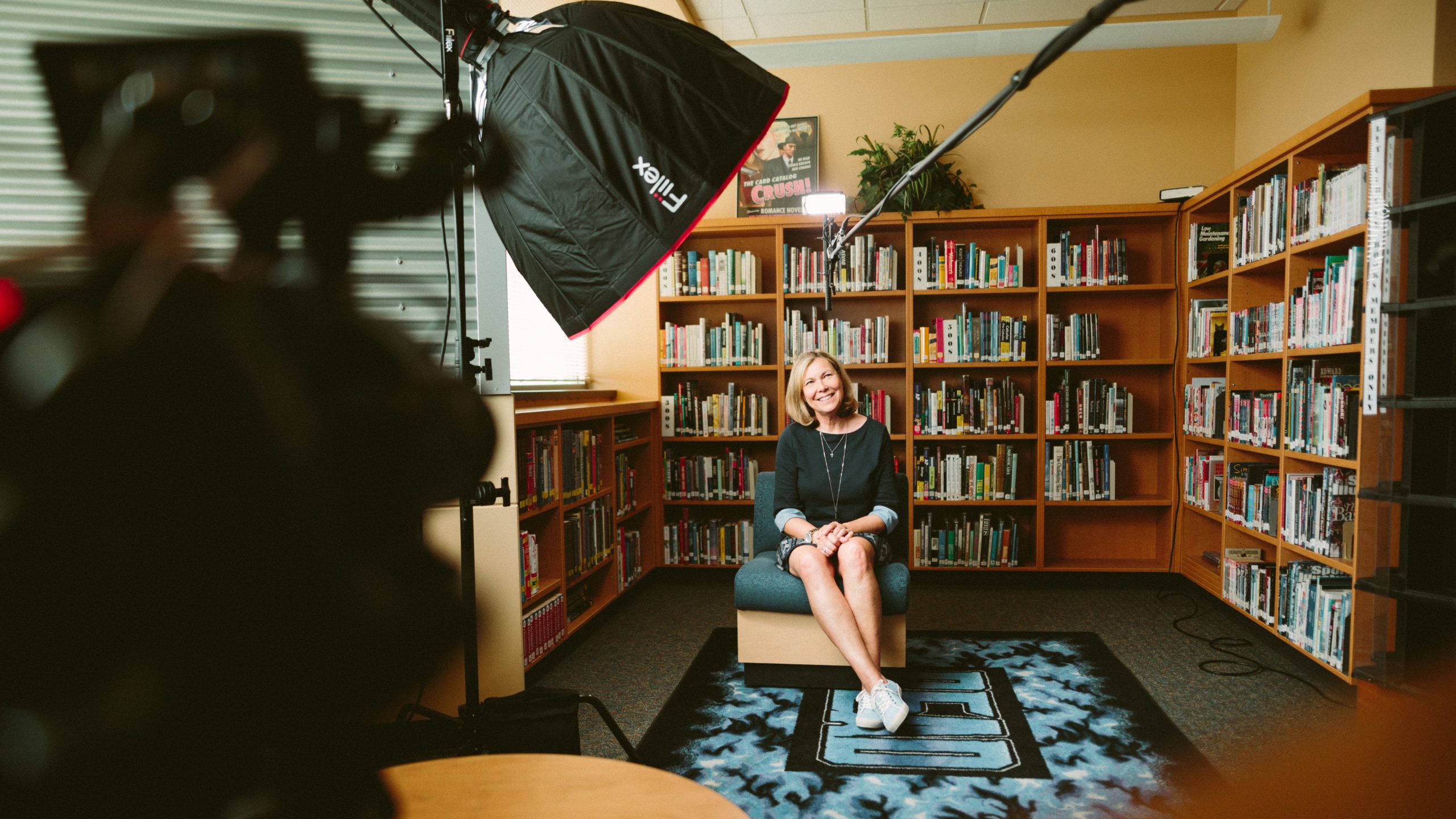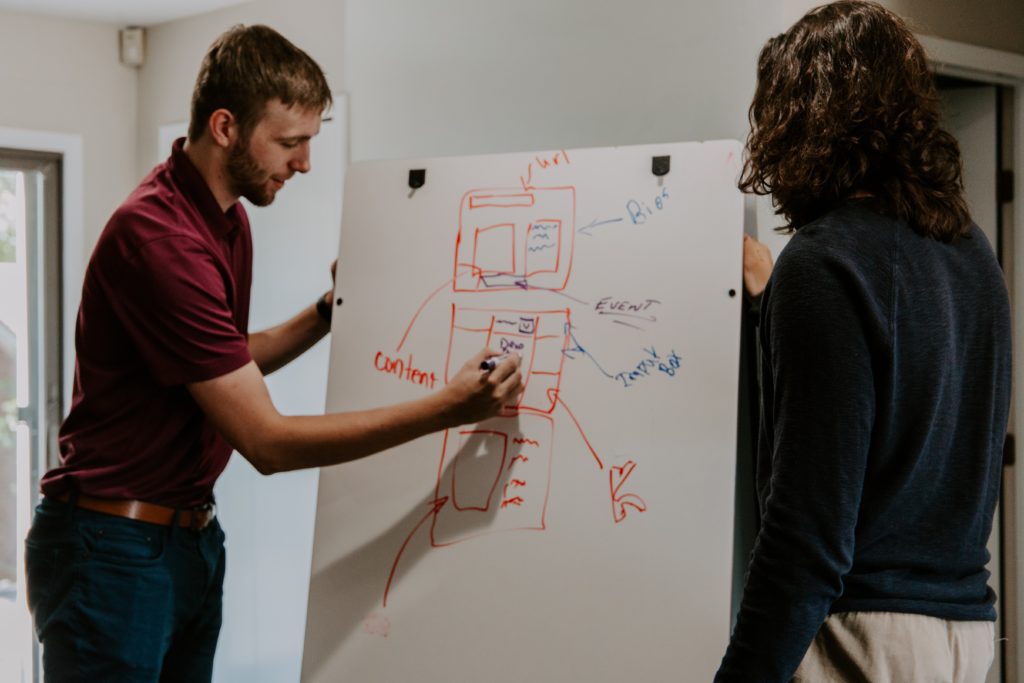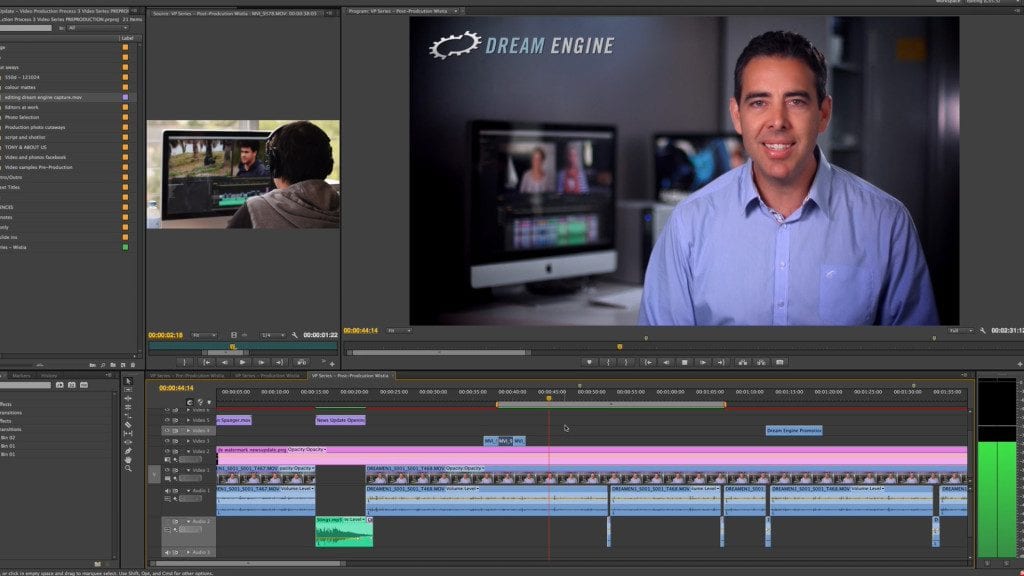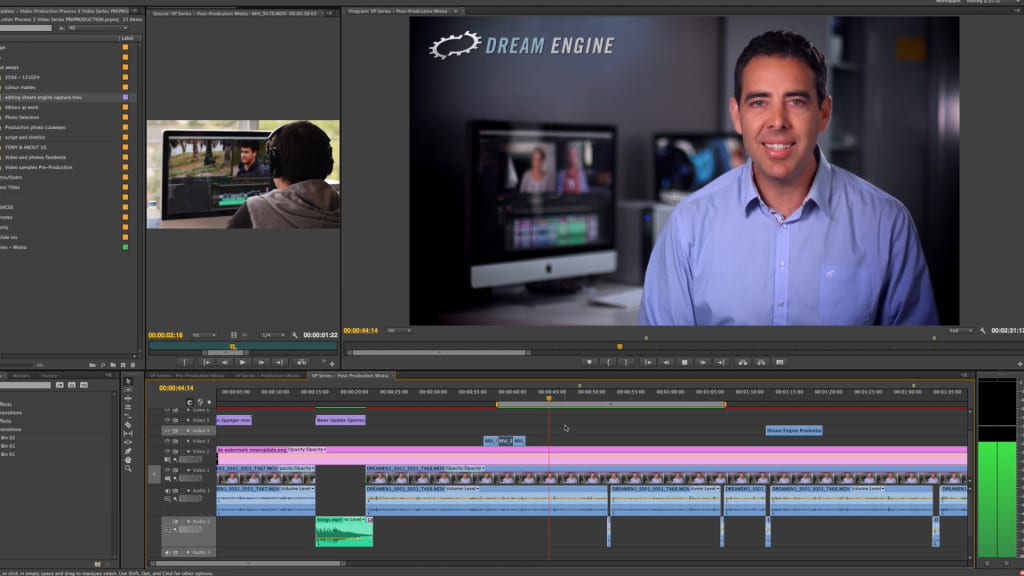Corporate Video Production Melbourne | Dream Engine | Australia
The corporate video production company for communication and marketing departments in Melbourne.
How the Video Production Process Works
It’s a process that involves a complex series of steps. The entire process will vary based on your budget and intended aims. There are some instances where you could have a go at producing the video content yourself. In most cases it’s best to work with a professional video production company.
Producing a professional and high-quality video is an elaborate process that can confusing for the uninitiated. The process requires extensive planning, a professional crew, and the right equipment. That is why you need to know all the steps if you want to create engaging video content. This post will take you step by step through each stage of how to make a video.


The Main Steps
Successfully creating a high-quality video requires several building blocks. The production process will vary based on budget, effort, timeline, content, and style. Video production is divided into three stages: pre-production, production, and post-production.
Pre-production
The pre-production stage involves preparing and laying the groundwork. During this stage, you will do some research and get the video production equipment to execute a successful video production project. The main things that will be happening during pre-production include:
1. Setting Goals and Crafting a Plan
Before doing anything, you need to know the final aim of your video production project. It will be difficult to produce a high-quality video if you don’t have a coherent goal. Just like in any other project, your objectives must use the SMART model — the goals must be Specific, Measurable, Achievable, Relevant, and Time-bound.
First, you need to establish budget objectives by coming up with cost estimates. Next, you will need to establish clear timelines. The project must be completed within a specific timeline. Finally, there is a need for clear marketing objectives to justify the investment in a video production project.
You will now need to develop a practical strategy that will guide the video production process. The planning process will determine whether you will use an in-house video production team to create the video or hire a video production company. In addition, the plan will state the process of distributing the video to the intended audience. Your video production plan also needs to explain how you will recycle and repurpose the video to save costs. Finally, you also need to come up with timelines and estimate the cost of the project.
It may seem like you’ll be working on many things, but coming up with a sound strategy will be the key to the success of your project. You need to remember that coming up with a video production strategy is not different from building a plan for other marketing campaigns.
You may have to look at your previous video production campaigns to get more insights. Experts in the industry may also give you more insights into what you should do.

2. Creating a Video Production Brief
Next, come up with a video production brief. The brief provides extensive details about the entire production journey. This is supposed to prevent guesswork and unnecessary mistakes.
Your brief must include the following information:
-
Production goals
-
A precise description of the audience
-
The video’s intended effect on the audience
-
The main message that drives the video production process
-
Timelines
The creative brief will also identify the type of video that you are planning to shoot. The main video types are commercials, branding videos, training videos and explainer videos. A commercial video is used to promote sales, a branding video is used to increase brand awareness, and an explainer video is used to explain a certain issue to the viewers. Keep in mind that each of these video types is shot in a different way.
3. Defining Your Message and the Intended Viewer
Understanding the preferences of your audience will help you to come up with the concept, and planning your script. So, you should try to find more information about the intended audience.
When you are trying to understand your audience better, it will be best if you put yourself in their shoes. Look for feedback that pinpoints the current issues of your target audience.
Once you have collated all data, go back to your original goals. What reaction do you expect to elicit from your audience after they have watched your video? Is there a specific feeling or thought that you are trying to evoke?
When creating a marketing message, you will need to determine the main pain points of your video production project. Next, you’ll need to make sure that your message is relevant to your brand and products. This will only work if you are offering some benefits to your audience, such as tips on how to do something.
For instance, you may want your audience to subscribe to your monthly newsletter after they have watched your video. This means that your video content must make them excited and have a desire for more similar content. This is how you will come up with your main message.
The core message should be immediately clear from the onset of the video.
4. Making a Storyboard
The storyboard can be helpful if you want to pre-visualise how the video will look. Some of the elements that will be included in your storyboard are transitions, framing, colouring, and lighting.
A well-crafted storyboard indicates each video shot in precise detail. This is what the video directors and will use during the shooting and editing process. Of course, they will be at liberty to make changes to the storyboard depending on the situation and the new insights about your intended viewers. Also, a detailed storyboard helps the video directors to identify any mistakes during the production process.
Some of the common components of a successful storyboard are:
Panels: A panel is a rectangular or square cell that represents a visual component or shot of the video project. Each panel should be numbered to create a seamless story flow.
Images: The images fill the panels. You can use stock images, original photos, and hand-written illustrations.
Captions and Titles: Captions and titles may appear next to the panels to provide additional information. For example, you can use captions to explain staging sequences, accompanying dialogue, shots, and facial expressions. Some captions even illustrate how the camera operator will move the camera during a specific dialogue.

5. Determining the Creative Process
The creative process is how you approach the video creation process. Basically, this is determining how the overriding idea of the video content will be integrated into the production process. You will use what you already know about your viewers and the goals of your project to construct an interesting process of capturing the audience’s attention. Consequently, you must do a brainstorming session.
During the brainstorming session, evaluate a myriad of potential creative approaches before filtering them to the most practical ones. It will help if you first wrote down all ideas regardless of how impractical they may sound. You can also use insights from previous video projects. Remember, successful filmmaking involves combining the intended audience’s desires with the best video production techniques.
6. Crafting the Script
Scriptwriting involves writing down the dialogue, expression, actions, and movement of the characters in the video. However, since this is a very delicate process, most video producers hire an expert to do it.
If you decide to do it yourself, you can choose to start with a general outline. There, you can list the main topics of the video content. This is where you also determine the style of delivery.
The script should speak directly to the viewer. Therefore, your dialogue should use “you” and “your” when referring to the viewers. This will sound more personal because people want to be spoken to and not spoken at.
You must ensure that the script does not sound robotic and artificial. Instead, it should have emotional elements to evoke certain thoughts and feelings. Moreover, it will help if it contains easy and simple language. Finally, don’t forget to include the key message in your script.
Depending on the purpose of your video content, you may need to plan for props, actors, and location booking.

7. Creating a Timeline for the Video Shoot
The last stage of pre-production involves scheduling the shoot. Some of the main things that will be happening during this process include determining the place of the shoot itself. You will also need to determine who will be the camera operator, production assistant, costume designer, and video director. In some situations, you may also need to interview actors and hire presenters.
This step also involves acquiring equipment for the video shoot. In addition to getting the audio and video equipment, you need to get the costume and you may need to hire a makeup artist. If you are shooting the video outdoors, you may require permission as well as a license from the appropriate authorities. It will also help if you had a contingency plan to ensure that the video shoot goes smoothly. Since this is a complex process, it will be best if you left it to an expert producer.
Production
All the preparation is now over, and you are ready to start shooting the video. This is the stage where you will get the footage and do the interviews.
Since filming requires extensive production gear and experience, you should probably hire professional videographers to do the shooting. They will use the video script, brief, and storyboard to bring your ideas into reality.

You will get many different timelines from various production companies. If you want to release the video by a certain date, then you should select a video agency that has shorter timelines.
If you are working with a video agency, ensure that they keep you informed as to how production is progressing. And, remember that everything you agree on must be presented in a signed contract.
It is the director’s responsibility to ensure that every action is accurately captured. The director must also check that that the lighting and framing are properly set up. One important thing to remember: don’t try to micromanage everything. Doing so will result in the failure of the video production process.
Some of the elements of a successful video shoot are:
Steady Video
You will need a tripod stand to shoot a steady video. A wall or the ground can also help to stabilise the camera and create perfect visual perspectives.
Creative Shots
Interesting videos are usually shot from multiple perspectives and angles. Therefore, you should position cameras above and below the objects and subjects.
Good Lighting
Using the correct type of lights, such as television lights, can create high-quality videos. In addition, you need to position your lights in places where they can create a natural effect. As a result, you may need full light, a backlight, and a light above the object.
Check the Audio
You can plug headphones into your camera to check whether the audio is being recorded. This is because you can easily forget to set up your audio recording settings. A video without the accompanying audio will hinder the smooth progress of your video recording project.
Post-production
1. Editing
Once you’ve gathered all the raw footage, it’s time for video editing, which marks the start of the post-production stage. Editing video content is a specialised task that requires the services of a professional video editor. Cutting footage and then merging them will be the main tasks during the editing process. The storyboards and script will guide what should be included and what should be discarded.
Another major factor to consider during the video editing process is the core message. The attention span of your audience is likely to be short, and that is why you must communicate your message in the shortest time possible. You’ll also find more success if you create a simple video that doesn’t have complicated language and topics.
Most importantly, videography is all about visual spectacles. There should be enough interesting visual elements to make people want to watch more. At the end of the video, there must be a call to action that will encourage the audience to reach out to your brand.
The editing process can go on for some time because you may want to suggest revisions and alterations to the initial drafts. If you give out requests to video editors for revisions, they must be precise, short, and clear.

2. Adding Special Effects
By this time, your video content is probably ready, but it will help if you added some special effects and graphics to make your video more engaging. Including graphs, figures, facts, and animated characters can provide additional information to your audience. Nevertheless, you must make sure that these special effects do not change the storyline of your video — their primary purpose will be to offer clarity and create better visuals.
3. Including Audio Effects
Great audio is also a key part of an engaging video. You will need a good editor to find the right music that will bring out the best effects. When you include the right sounds and music effects, your video will come across as more engaging to the audience.
While popular soundtracks are an obvious choice, subtle music is also encouraged. The selected soundtrack should complement the tone and mood of your video while communicating your main message. Unless you are a music composer, you’ll most likely have to pay the person or agency with the music copyright.
The voiceover should be recorded when you are adding the music. Voiceovers complement the existing music and bring a human touch to the video.
You will need to hire a voiceover artist to do the voiceovers. The artist must know the preferences of the intended audience and have a warm and welcoming voice. You can choose to record several voiceover versions with the same artist and then select the one that will fit the existing footage.
4. Formatting and Hosting the Video Content
You should have the final video product by now. The next step is to ensure that the video is in the right format for broadcasting. For instance, you can convert the video into an MP4 format. The MP4 format is supported by many online video hosting sites and players.
In most cases, you are likely to create an HD version of your video if it’s going to be used at a conference. On the other hand, social media videos need to be shorter and compressed so that they can play better on a mobile device.
Once you have done the formatting, you need to start sharing and distributing the video. This distribution and sharing will mostly be done over the internet. You can host the content on a paid video site to access optimisation and analytics capabilities.
Similarly, you can choose other platforms such as YouTube, which is free but gives you limited control over your videos. Finally, it is possible to distribute the video from your server. Using a paid site is usually the best option because it comes with metric tracking capabilities that you can utilise to appraise the success of the video.

5. Promoting the Video
The audience isn’t automatically going to view your video if you don’t promote it. So, marketing your video should be included in your video creation strategy. But before you can start marketing your video, you need to know where your audience frequents. This ensures that you don’t waste money on useless marketing platforms.
You can promote your video by using social media. For instance, you can ask a social media influencer to share your video on their social media page and then link it to your site. Alternatively, you can use Facebook promotion tools for advertising your video. The cost of advertising on Facebook and other social media platforms varies depending on the length of your video and your intended audience.
Another good video promotion strategy is SEO. When you post the video on your website, you can use specific keywords that will attract the audience. You can also link the video to other pages.
If your budget allows it, there is also another option of showing your video on television. Finally, you can use email marketing for advertising your video by sending it via email to your subscribers.
6. Tracking the Video Metrics
Now is the time to begin tracking the goals that you came up with at the beginning of the project. How many people are responding to your video? Lack of proper video metrics analysis means you can’t know whether the entire operation was a success.
First, you will need to determine the play rate by determining the percentage of people who clicked and watched your video and dividing it by the percentage of the total number of visitors who accessed your video landing page. Next, you may need to look at the number of people who shared your video on the main social media platforms. Similarly, you will need to determine the average watch time by looking at the total watch time as well as the video replays. If most people stop watching your video after the first few seconds, then you probably did not produce an effective video.
The process of tracking the success of your video will be easier if you use paid hosting platforms for your video. These platforms come with many video tracking tools. You will be able to determine the number of people who viewed your video, how long they watched your video, and their location. It will also be easier to know the type of browsing device that the audience used to access your video as well as other details such as their age and gender. This is the insight that you can not find on free hosting platforms such as YouTube.
Tracking the success of your objective is integral to the entire video production project. With the lessons learned, you can do better in your future video production endeavours.

Final Words
As indicated above, successfully producing a high-quality, compelling video is a long process. You’ll need to invest your time, energy, and skills to create video content that can effectively convey your message. Of course, one option is to eliminate the entire learning curve and hire a professional video production company like Dream Engine.
